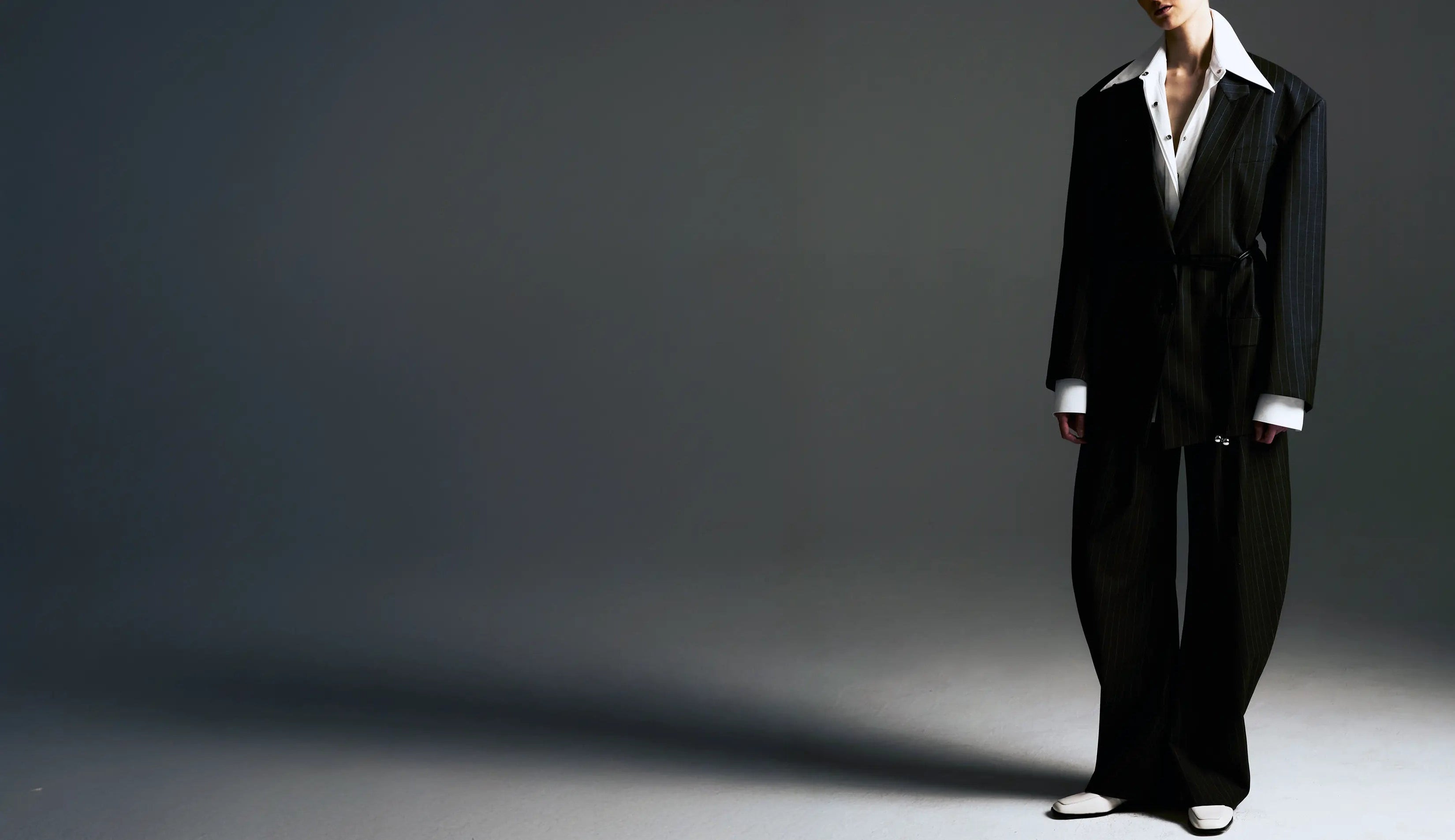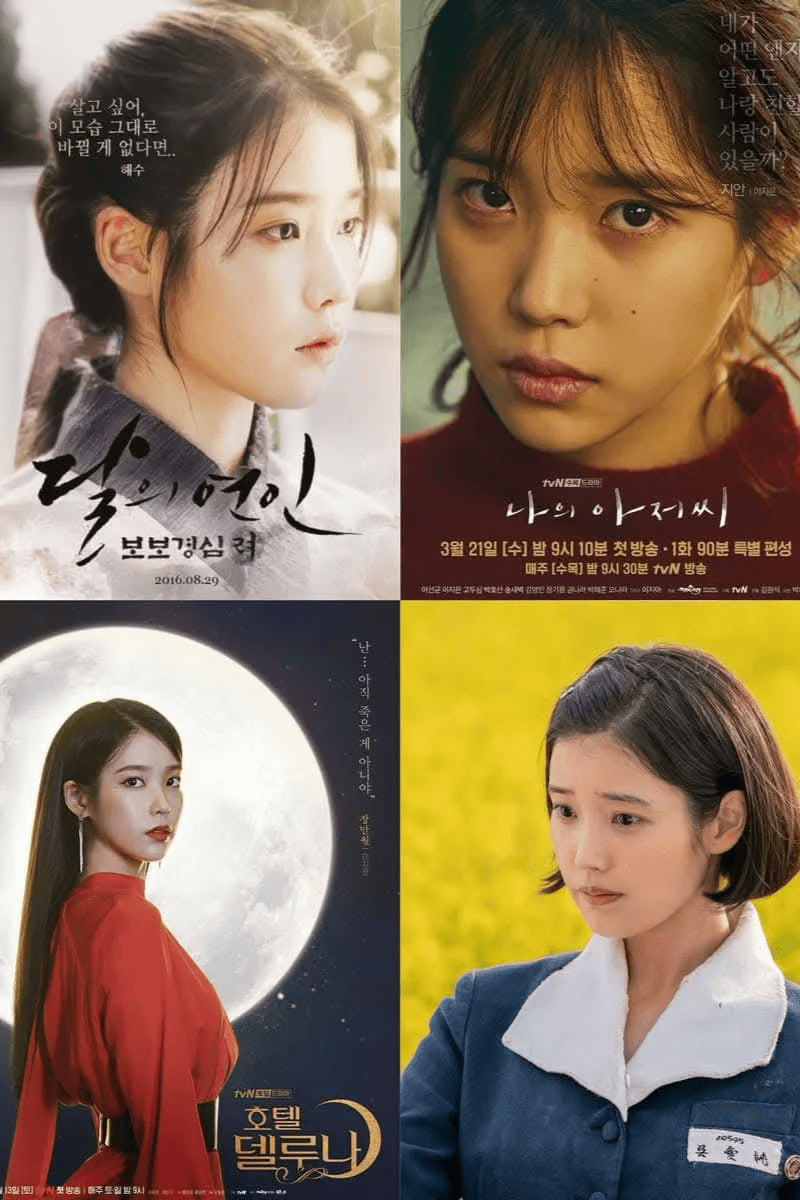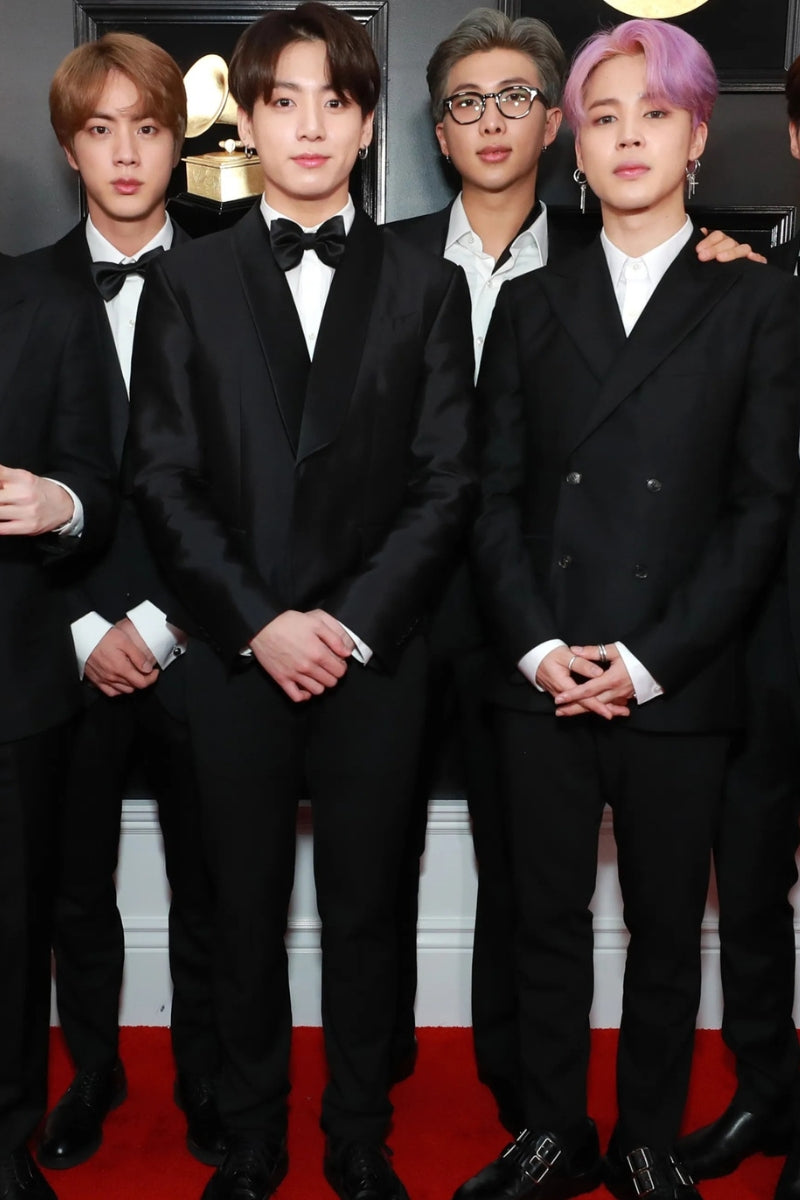Character Architecture: Constructing Identity Through Silhouette
The technical challenges of creating wardrobes for serialized television demand construction approaches that differ fundamentally from traditional theatrical or film costume design. K-Drama characters must maintain consistent visual identity across dozens of episodes while accommodating multiple fittings, extensive wear, and narrative evolution that might span fictional years within production schedules measured in months.
Traditional costume construction prioritizes visual impact for specific scenes or sequences, often accepting structural compromises that serve immediate photographic needs. K-Drama styling requires garments that maintain their intended silhouette through repeated wear, cleaning, and potential alterations while supporting character development that might require subtle wardrobe evolution throughout the series narrative arc.
The protagonist's red outfit in "Crash Landing on You" exemplifies this construction philosophy. The garment's clean lines and architectural precision suggest internal construction that prioritizes longevity and consistency over dramatic visual effects. The silhouette maintains its intended proportions whether the character is standing in contemplative moments or moving through complex action sequences—a technical feat that requires understanding both traditional tailoring principles and the specific demands of television production.
The color choice demonstrates strategic thinking that extends past aesthetic considerations. Red's visual impact creates immediate character distinction while its saturated intensity photographs consistently under various lighting conditions common in television production. The technical challenge involves achieving color consistency across multiple garments that might be constructed for stunt doubles, backup pieces, or replacement needs throughout the production schedule.
The fit philosophy visible in the poster suggests construction approaches that balance precision with practicality. The garment appears custom-fitted to the performer's proportions while maintaining clean lines that complement rather than compete with the other characters' wardrobes. This requires pattern-making expertise that creates individual optimization within group visual harmony—a tailoring challenge that resembles coordinating wedding party attire but with significantly more complex timeline and usage requirements.
The internal construction must accommodate television production's physical demands while maintaining the sophisticated appearance that defines the character's visual identity. This typically involves reinforced stress points, specialized cleaning considerations, and construction techniques that prevent visible wear or distortion under intensive use conditions. The floating canvas technique becomes particularly critical, providing structure that maintains silhouette integrity without creating stiffness that would interfere with natural movement or comfort during extended wearing periods.
Cultural Translation: Korean Aesthetics in Global Contexts
The influence of K-Drama styling on international fashion preferences operates through subtle aesthetic shifts rather than obvious cultural appropriation. Korean design philosophy emphasizes different proportional relationships, color applications, and fit philosophies than traditional Western tailoring conventions, creating hybrid approaches that serve contemporary clients seeking alternatives to established formal wear traditions.
Korean formal wear traditions often prioritize harmony and contextual appropriateness over individual statement-making, a cultural value that conflicts with Western fashion's emphasis on personal distinction and individual expression. This philosophical difference becomes visible in how K-Drama wardrobes approach character distinction—creating memorable visual identity through sophisticated construction and strategic color use rather than obvious stylistic flourishes or trend-driven details.
The proportional preferences in Korean tailoring often favor different silhouette relationships than traditional Western standards. Korean aesthetic traditions might emphasize longer jacket lengths, alternative button placements, or different armscye relationships that create visual effects more aligned with Korean beauty ideals. When these preferences encounter international markets, the result often involves hybrid construction approaches that balance cultural authenticity with local aesthetic expectations.
The color palette strategies visible in K-Drama styling also differ from traditional Western formal wear conventions. Korean design approaches might incorporate saturated colors or unexpected combinations in contexts where Western traditions favor more restrained choices. The red ensemble in "Crash Landing on You" demonstrates this philosophy—using bold color as sophisticated design element rather than attention-seeking device.
The fit philosophy reflects cultural differences in comfort expectations and movement priorities. Korean garment construction often emphasizes ease and comfort in ways that differ from Western tailoring's traditional emphasis on precise body-conscious fitting. This cultural difference has generated construction innovations that achieve sophisticated appearance while prioritizing wearer comfort and natural movement—an approach that resonates with contemporary clients seeking alternatives to traditional formal wear's restrictions.
The fabric selection strategies also demonstrate cultural aesthetic differences. K-Drama wardrobes often incorporate fabrics with subtle texture or surface interest that create visual engagement without obvious pattern or decoration. This approach requires understanding how different textile characteristics interact with television production requirements while serving Korean aesthetic preferences for sophisticated understatement.
Production Engineering: Durability Within Sophistication
The technical requirements of television production create construction challenges that push traditional tailoring boundaries while maintaining the sophisticated appearance that defines contemporary K-Drama aesthetics. Garments must perform under conditions that exceed normal wear expectations while appearing effortlessly elegant under various lighting and camera conditions.
The filming schedule demands create unique wear patterns that don't exist in conventional garment applications. Scenes might be shot multiple times from different angles, requiring garments to maintain their appearance through extended wearing periods interrupted by brief breaks for equipment setup or scene changes. This usage pattern requires construction techniques that prevent visible wear or shape distortion under conditions that would challenge even high-quality ready-to-wear garments.
The lighting requirements for television production also influence construction decisions in ways that don't typically affect custom tailoring. Different fabric surfaces respond unpredictably to television lighting, creating potential visual effects that might interfere with intended character presentation. Construction seaming, internal structure, and finishing details that remain invisible under natural lighting conditions might become prominently visible under production lighting arrangements.
The multiple garment requirements for television production multiply construction challenges exponentially. Each character typically requires multiple identical garments to accommodate stunt doubles, backup needs, and potential damage or wear during extended production schedules. Creating multiple garments that maintain consistent appearance and fit requires pattern documentation and construction standardization that exceeds typical custom tailoring requirements.
The maintenance requirements for television production also differ significantly from normal garment care expectations. Frequent cleaning, rapid turnaround times, and potential repairs during active production schedules require construction techniques that prioritize maintainability and durability over traditional luxury finishing methods. This practical consideration creates interesting technical challenges that generate innovative approaches to construction and finishing.
The alteration requirements during production create additional technical considerations. Character development might require wardrobe modifications, or performer physical changes during extended production schedules might necessitate garment adjustments. Construction techniques must accommodate potential alterations without compromising overall garment integrity or visual consistency.
The Mathematics of Screen Translation
Creating garments that appear sophisticated on television while maintaining that elegance in person requires understanding the mathematical relationships between construction details and visual perception through different media. Television production flattens dimensional relationships and alters color perception in ways that require compensatory adjustments to traditional tailoring approaches.
Camera angles and focal lengths affect how proportional relationships appear on screen compared to direct observation. A lapel width that creates optimal visual balance in person might appear disproportionate when viewed through television production techniques. Successful screen tailoring requires understanding how construction proportions translate through different viewing contexts and making mathematical adjustments to achieve intended visual effects.
The color correction processes used in television production also affect how fabric colors and surface characteristics appear in final broadcasts. Colors that appear balanced during fitting might shift significantly through production processing, requiring fabric selection strategies that account for these technological mediations. The red ensemble in "Crash Landing on You" demonstrates successful navigation of these challenges—maintaining its intended visual impact through production processing while serving the character's narrative requirements.
The scale relationships between different characters' wardrobes also require mathematical coordination that doesn't exist in individual garment construction. Each character's costume must complement the others while maintaining individual distinction, creating group presentation challenges that require understanding how different proportions and colors interact within frame compositions and various camera distances.
The movement requirements for television performance also influence construction mathematics. Garments must maintain their intended silhouette through the full range of movements required by character blocking and scene requirements. This typically requires ease calculations that exceed normal tailoring standards while preventing the excess fabric from creating unflattering visual effects under camera observation.
The sizing considerations for television production often require adjustments to normal tailoring approaches. Camera angles and lighting can emphasize construction details or fit characteristics that remain invisible in normal wear contexts. This requires construction techniques that optimize for visual appearance through production mediation rather than traditional fit optimization for direct observation.
Global Adaptation: Local Tailors Interpreting Korean Innovation
The influence of K-Drama styling on international custom tailoring manifests through subtle technical adoptions rather than obvious aesthetic copying. Sophisticated tailors worldwide have begun incorporating construction techniques and proportional approaches developed for Korean television production into their client work, creating hybrid services that address contemporary style preferences shaped by global media consumption.
The floating canvas techniques adapted from Korean construction approaches offer advantages for clients seeking garments that maintain their silhouette through extended wear while providing comfort levels that exceed traditional Western formal wear. These construction methods serve contemporary lifestyle requirements that prioritize comfort and durability alongside sophisticated appearance—values that align with modern professional and social expectations.
The proportional modifications inspired by Korean design philosophy create silhouette alternatives that serve clients seeking distinction from traditional formal wear templates without obvious cultural appropriation or trend-driven styling. These subtle adjustments to lapel relationships, button placement, or overall garment proportions provide sophisticated customization options that reference contemporary global aesthetic influences.
The color integration strategies developed for Korean television production translate effectively to custom formal wear applications. Clients increasingly request sophisticated color applications that move past traditional formal wear limitations while maintaining appropriate ceremonial dignity. The technical expertise required for these color integrations requires understanding both traditional tailoring principles and contemporary aesthetic expectations shaped by global media exposure.
The fabric selection innovations driven by Korean production requirements also benefit international custom tailoring applications. The performance characteristics required for television production—durability, comfort, visual consistency—align with contemporary client priorities for formal wear that serves demanding professional and social schedules while maintaining sophisticated appearance standards.
The fitting philosophy adaptations from Korean construction approaches address contemporary comfort expectations while maintaining the precision fit quality that defines custom tailoring. This synthesis creates garment experiences that serve modern lifestyle requirements without compromising the visual sophistication that motivates custom tailoring investment.
Technology Integration: Digital Influence on Physical Construction
The intersection of Korean entertainment industry innovation with global tailoring practices demonstrates how digital culture influences physical garment construction. K-Drama production requirements have accelerated technical developments that address the challenges of creating sophisticated clothing for digital media consumption—innovations that translate effectively to contemporary custom tailoring applications.
The pattern development technologies used in Korean entertainment production often exceed traditional custom tailoring standards for documentation and reproducibility. Creating multiple identical garments for television production requires pattern documentation and modification techniques that ensure consistency across different construction teams and timelines. These documentation innovations benefit custom tailoring operations seeking to improve quality control and client service consistency.
The fitting technologies developed for Korean production applications also offer advantages for contemporary custom tailoring. Managing fittings for multiple performers across extended production schedules requires efficiency and accuracy innovations that translate effectively to custom tailoring operations serving demanding contemporary clients with complex schedule requirements.
The fabric testing and selection technologies used in Korean production address performance requirements that exceed traditional formal wear expectations. Understanding how different textiles respond to production conditions—lighting, wear patterns, maintenance requirements—requires technical expertise that benefits custom tailoring applications serving clients whose formal wear must perform under demanding contemporary professional and social conditions.
The quality control technologies developed for Korean production applications ensure consistency standards that exceed typical custom tailoring practices. Managing quality across multiple garments and extended production timelines requires systematic approaches that benefit custom tailoring operations seeking to improve service reliability and client satisfaction.
The communication technologies used in Korean production coordination also offer advantages for contemporary custom tailoring operations. Managing complex projects involving multiple stakeholders, timeline coordination, and quality standards requires communication innovations that translate effectively to custom tailoring operations serving sophisticated contemporary clients.
Economic Implications: Premium Positioning Through Cultural Intelligence
The influence of K-Drama aesthetics on global tailoring preferences creates economic opportunities for sophisticated custom tailoring operations that understand how to translate entertainment industry innovations into client services. This cultural intelligence provides competitive differentiation that commands premium pricing while serving contemporary style preferences shaped by global media consumption.
The technical expertise required for K-Drama-influenced construction approaches represents advanced skills that merit compensation reflecting specialized knowledge and cultural sophistication. Clients seeking alternatives to traditional formal wear approaches often value the cultural intelligence and technical innovation required for successful execution of these aesthetic preferences.
The customization opportunities created by Korean design influence provide service differentiation that distinguishes sophisticated tailoring operations from conventional formal wear providers. Offering construction techniques and aesthetic options inspired by global entertainment industry innovations creates unique value propositions that serve culturally sophisticated clients seeking distinctive formal wear solutions.
The market positioning opportunities created by cultural expertise in Korean aesthetic principles provide competitive advantages for tailoring operations that understand how to communicate these capabilities to appropriate client segments. The growing global appreciation for Korean cultural exports creates market demand for services that demonstrate authentic understanding of these aesthetic influences.
The collaboration opportunities with related service providers—photographers, event planners, style consultants—create business development possibilities for tailoring operations that demonstrate expertise in globally influenced aesthetic approaches. These cultural competencies create networking and referral opportunities that expand market reach and client acquisition potential.
The educational and content marketing opportunities created by expertise in global fashion influences provide thought leadership platforms that establish market authority and attract sophisticated clients. Demonstrating understanding of how international cultural trends influence contemporary tailoring creates credibility that supports premium positioning and client acquisition.
Future Trajectories: When Entertainment Drives Craftsmanship Evolution
The technical innovations emerging from K-Drama production requirements suggest several evolutionary directions that could influence broader custom tailoring approaches. These developments represent fundamental shifts in how sophisticated clothing is conceptualized, constructed, and experienced rather than simply aesthetic trend variations.
Sustainability considerations increasingly influence both entertainment production and custom tailoring applications. The durability requirements that drive Korean production innovation align with contemporary environmental values emphasizing garment longevity over frequent replacement. The construction techniques developed for entertainment applications often exceed traditional custom tailoring standards for durability and maintainability.
Technology integration will likely accelerate in both entertainment production and custom tailoring applications, with digital tools and communication methods becoming more sophisticated and accessible. The production requirements that drive Korean innovation create testing opportunities for emerging technologies that might eventually find broader custom tailoring applications.
The globalization of aesthetic preferences will likely continue expanding, with innovations from entertainment applications influencing broader fashion construction and styling approaches. This cultural cross-pollination creates opportunities for technical advancement that draws from diverse aesthetic traditions and application contexts.
Cultural fusion in tailoring techniques will likely continue evolving, with Korean innovations influencing construction approaches in other cultural contexts while traditional techniques from various cultures contribute to hybrid approaches. This exchange creates opportunities for technical innovation that honors multiple aesthetic traditions while serving contemporary lifestyle requirements.
The relationship between entertainment industry innovation and custom tailoring will probably deepen, with construction techniques developed for production applications finding broader utility in formal wear, professional attire, and lifestyle clothing markets. The performance demands that drive entertainment industry innovation address challenges that exist across multiple clothing categories.
Conclusion: Performance as Authenticity Standard
The influence of K-Drama wardrobes on global tailoring trends demonstrates how authentic cultural expression, when filtered through sophisticated technical execution, creates aesthetic innovations that transcend their original contexts. The construction techniques developed for Korean television production address contemporary lifestyle requirements while maintaining the visual sophistication that defines quality custom tailoring.
The technical innovations emerging from entertainment industry applications offer valuable insights for custom tailoring operations seeking to serve contemporary clients whose expectations have been shaped by global media consumption. The construction approaches developed for performance contexts often exceed traditional tailoring standards for durability, comfort, and visual consistency—qualities that benefit any sophisticated garment application.
The cultural intelligence required for successful adaptation of these influences represents competitive advantage for tailoring operations that understand how to translate entertainment industry innovations into client services without losing the authenticity that makes these aesthetic approaches compelling. The precision required for successful cultural translation suggests that the most enduring fashion innovations emerge from respectful engagement with their cultural origins rather than superficial aesthetic borrowing.
As custom tailoring continues evolving in response to globally influenced client expectations, the technical foundations established through Korean entertainment industry innovation provide valuable precedents for addressing contemporary requirements that emphasize both sophisticated craftsmanship and cultural authenticity. The precision disguised as effortlessness that defines K-Drama styling offers models for creating custom garments that serve contemporary lifestyle demands while maintaining the visual and technical sophistication that justifies custom tailoring investment.




